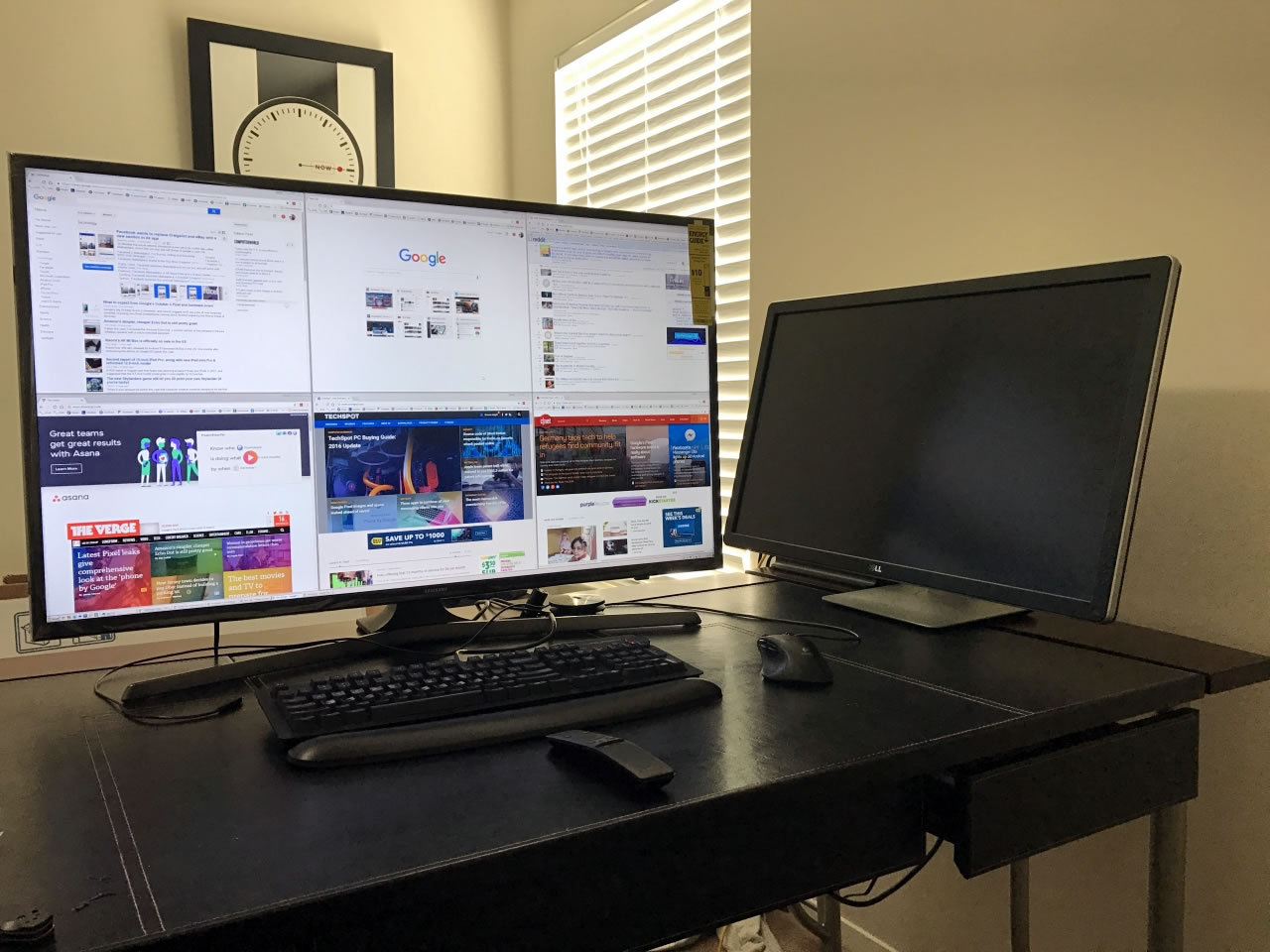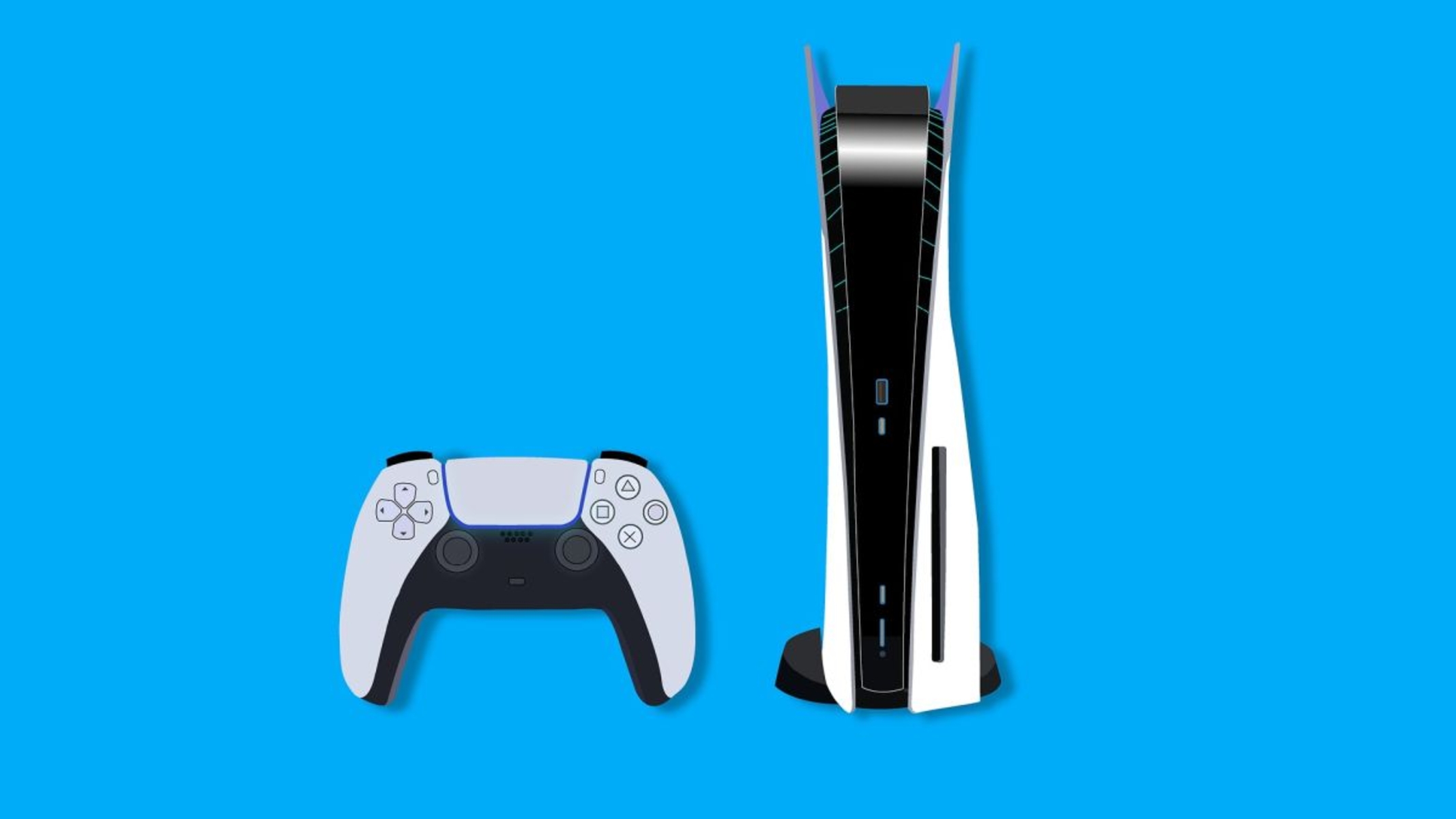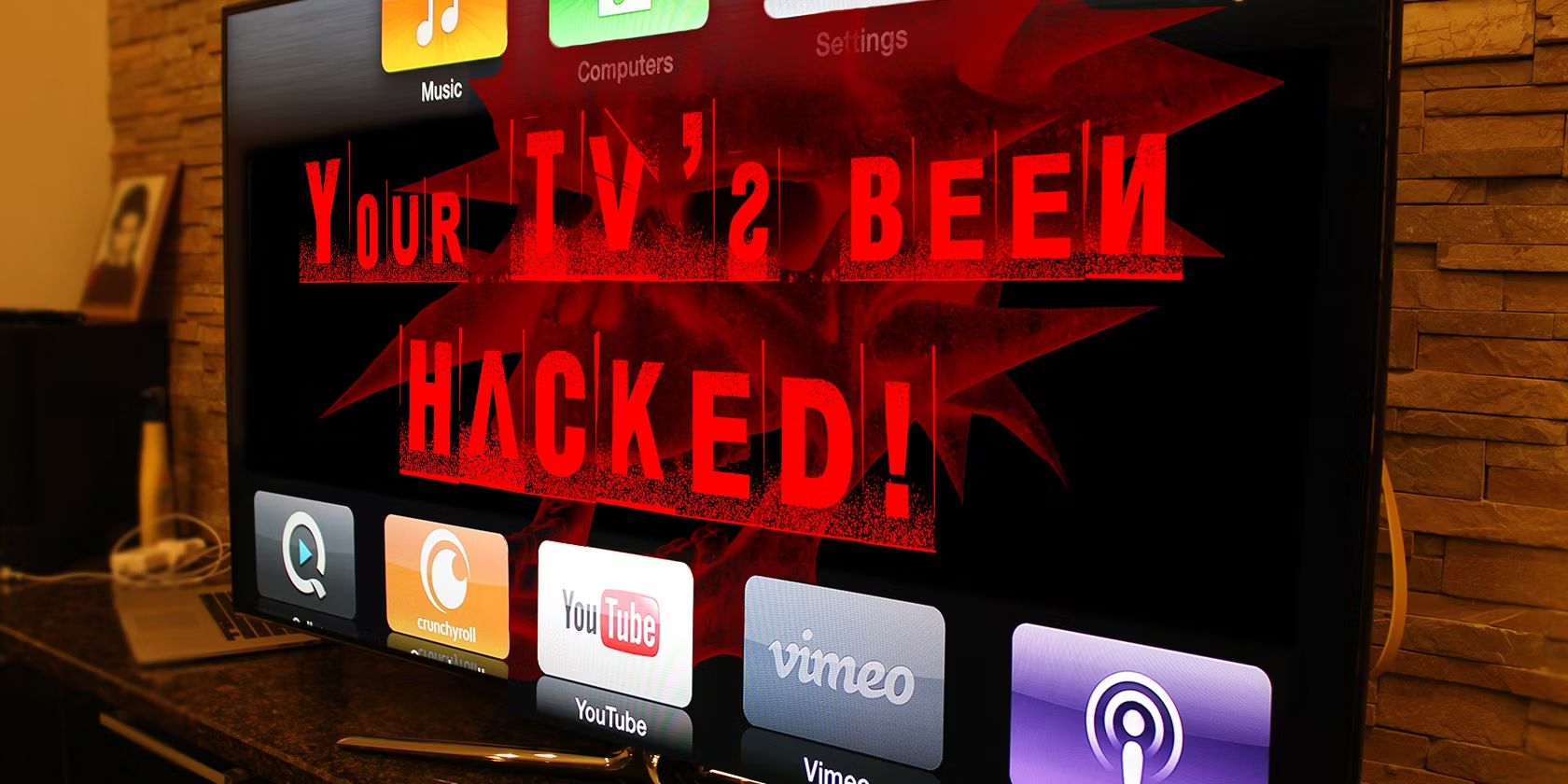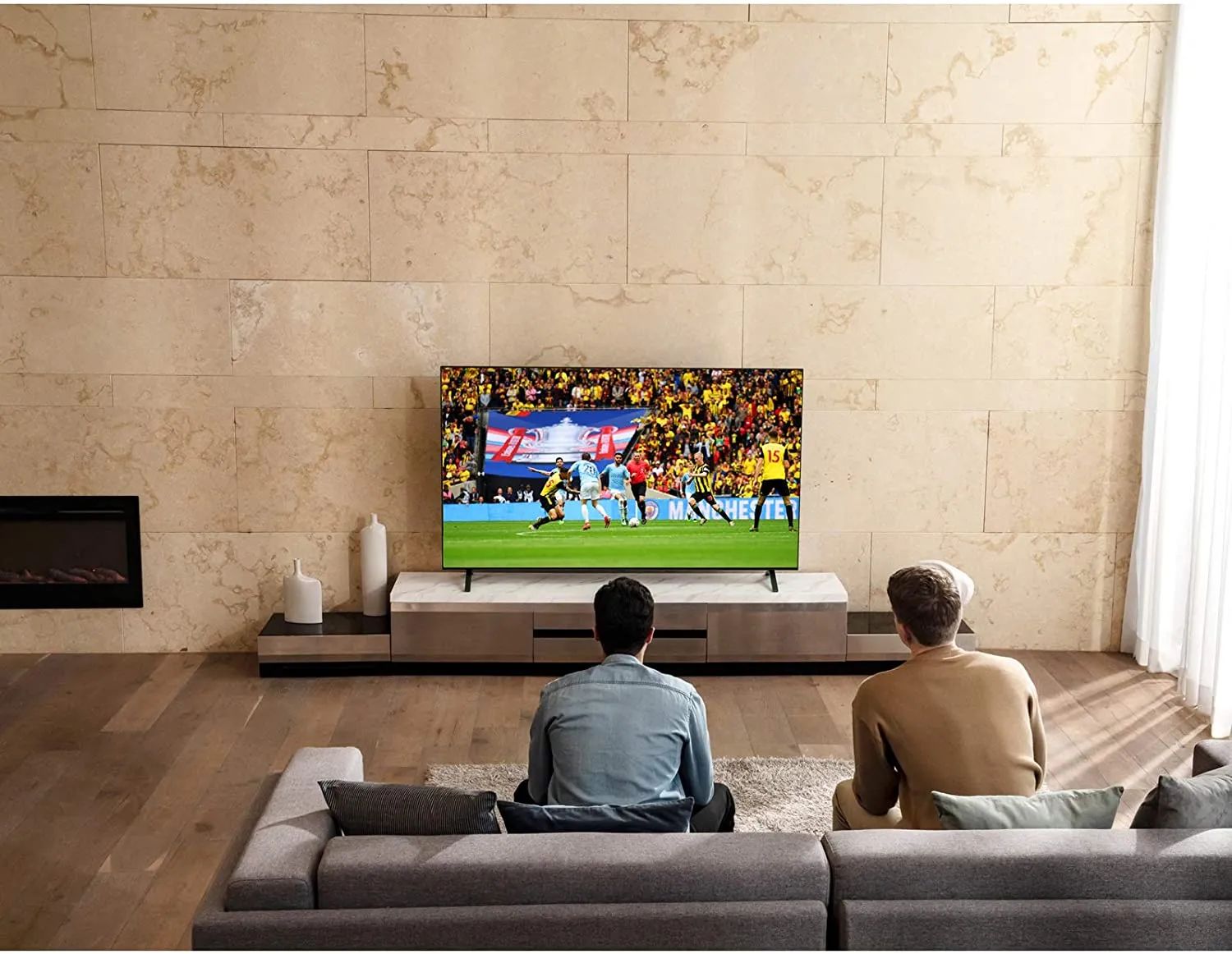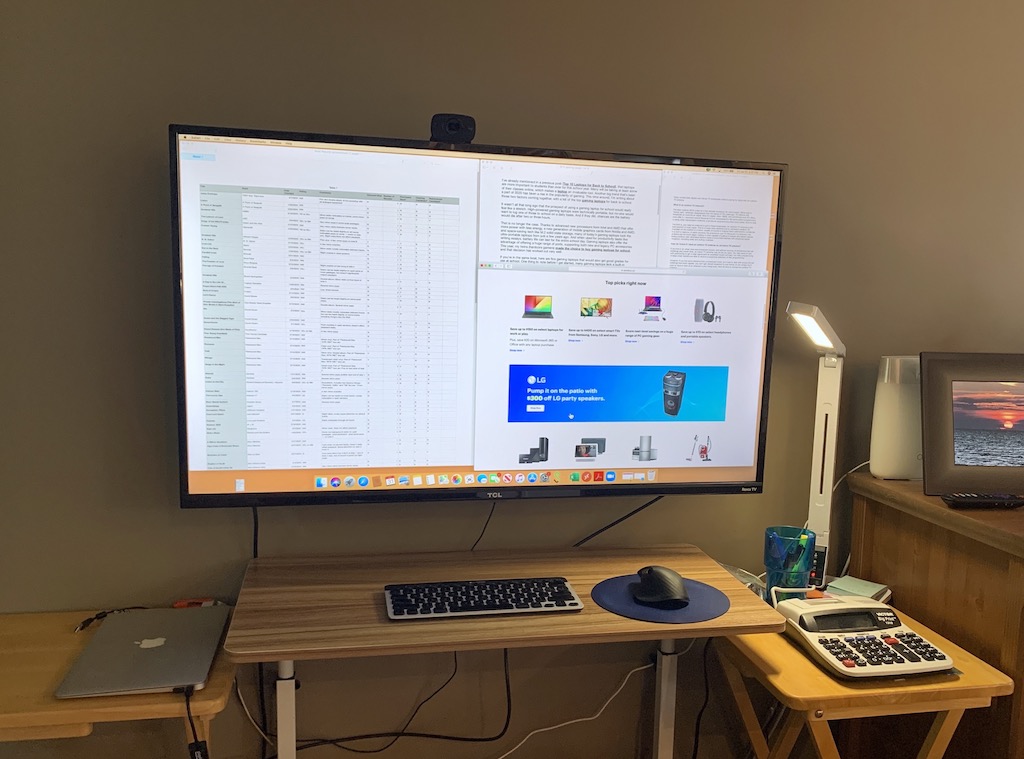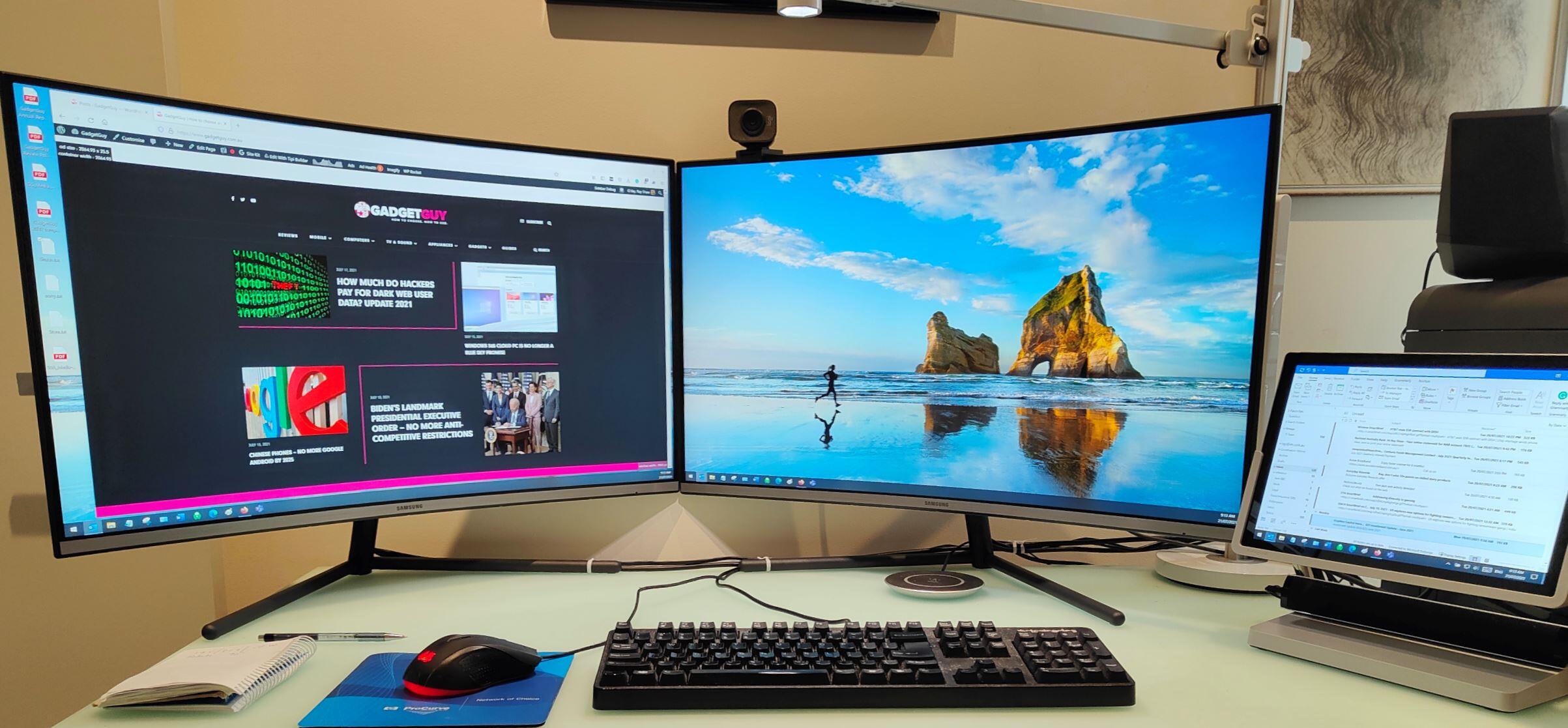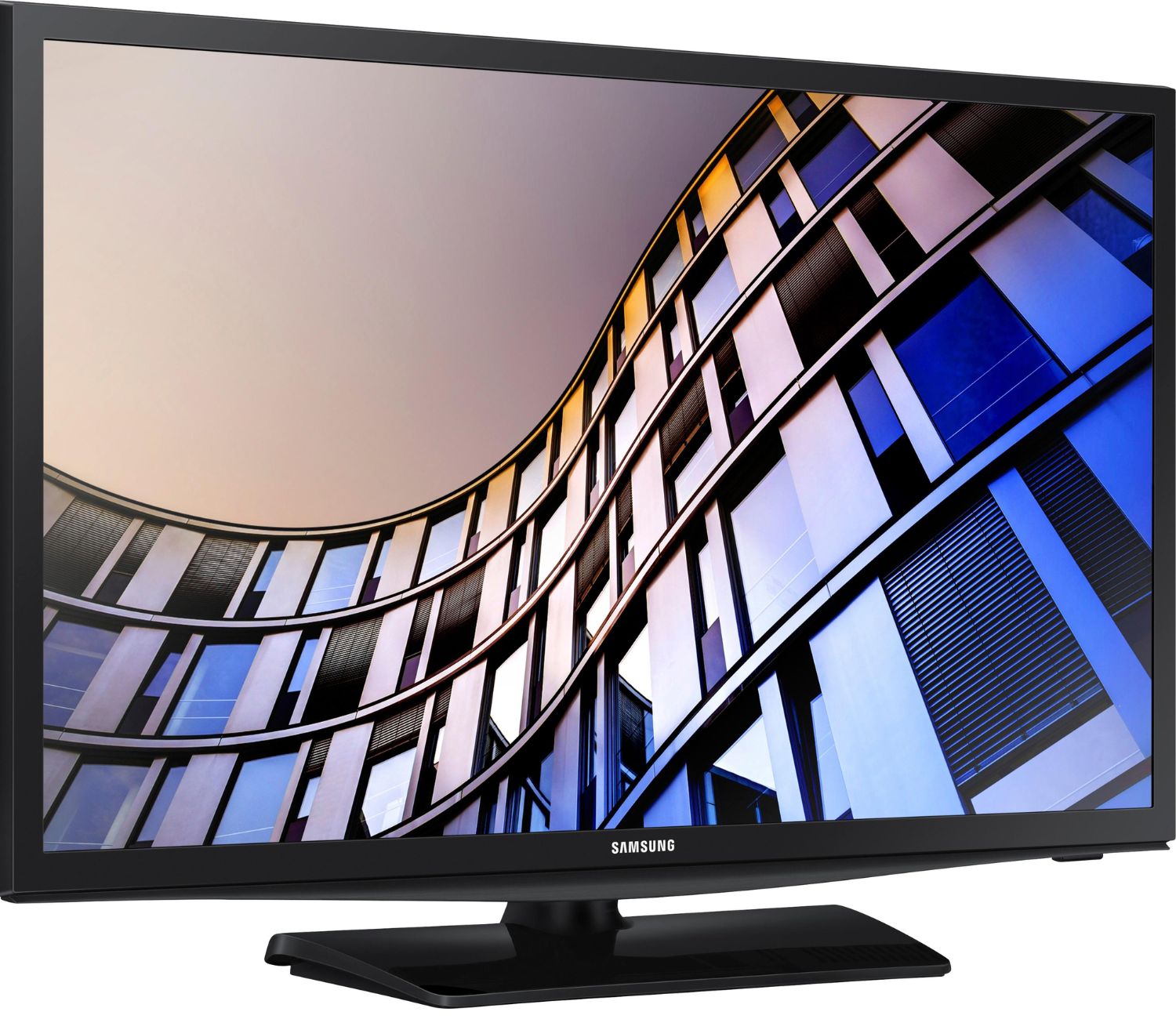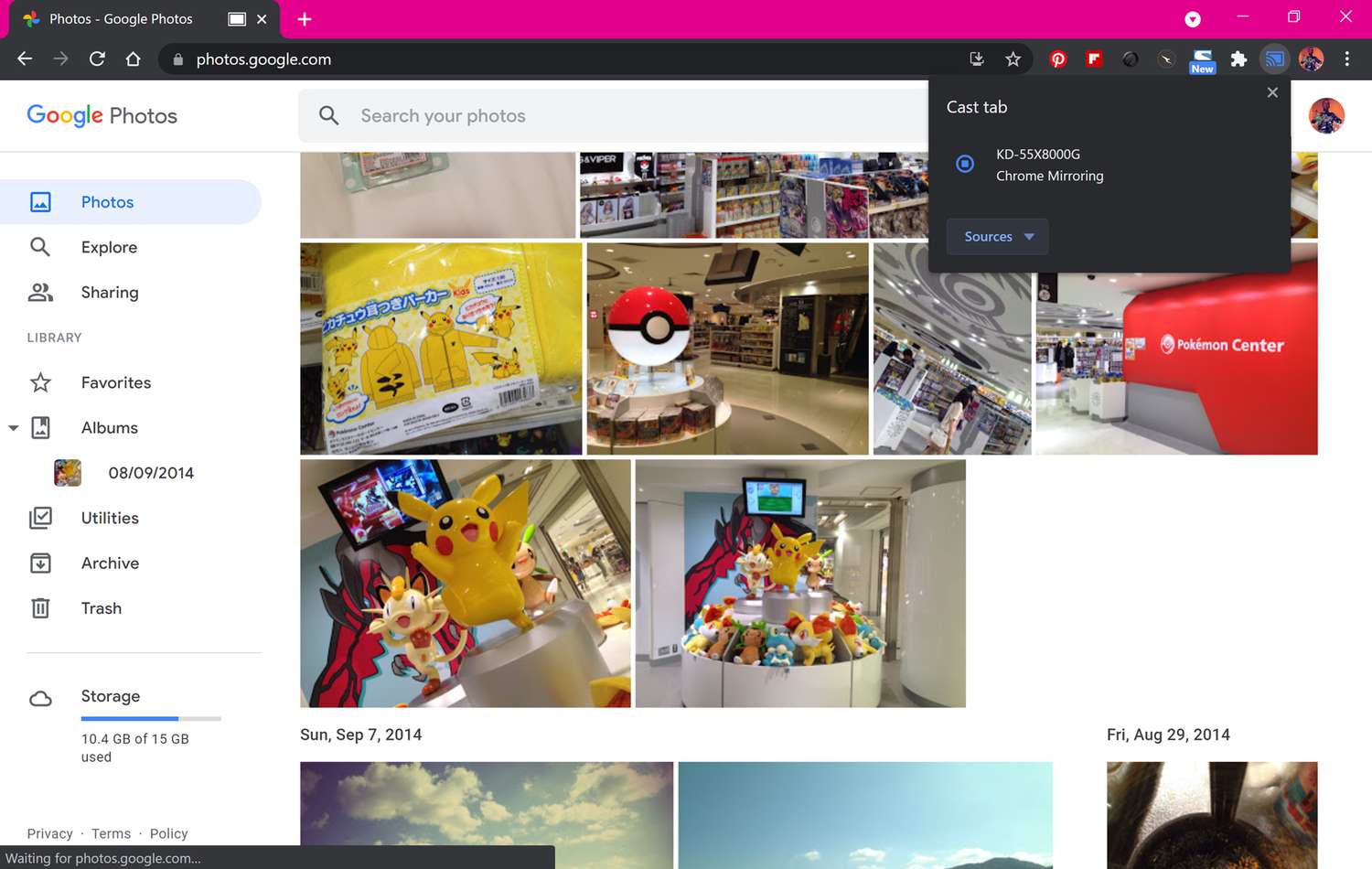Introduction
With the increasing popularity and advancement of technology, smart TVs have become more versatile and powerful than ever before. Gone are the days when a TV was solely used for watching your favorite shows and movies. Nowadays, you can transform your smart TV into a full-fledged computer monitor, allowing you to browse the internet, work on documents, and even play games with ease.
Using a smart TV as a computer monitor not only provides you with a larger display but also eliminates the need for an additional monitor, saving you space and money. Whether you want to enhance your productivity by expanding your workspace or enjoy a cinematic gaming experience on a big screen, utilizing your smart TV as a computer monitor is a convenient and practical solution.
Before you dive into the world of using a smart TV as a computer monitor, it’s essential to ensure compatibility between your devices and understand the necessary steps to set it up correctly. In this guide, we will walk you through the process of using your smart TV as a computer monitor, from verifying compatibility to troubleshooting common issues.
So, if you’re ready to unlock the full potential of your smart TV and elevate your computing experience, let’s get started!
Step 1: Verify compatibility
The first step in using your smart TV as a computer monitor is to ensure that both your TV and computer are compatible with each other. Here are a few key factors to consider:
- Resolution: Check the supported resolutions of your smart TV and compare them to the display resolutions supported by your computer’s graphics card. It’s important to have matching resolutions to ensure a proper visual experience.
- Connectivity options: Determine the available connectivity options on both your smart TV and computer. Common options include HDMI, DisplayPort, DVI, and VGA. It’s ideal to have matching ports on both devices for a seamless connection.
- Operating system compatibility: Confirm that your computer’s operating system is compatible with your smart TV. Most modern smart TVs are compatible with Windows, macOS, and Linux operating systems.
Once you have verified the compatibility between your smart TV and computer, you can proceed to the next step.
Note: Some older smart TVs may not have the necessary capabilities to function as a computer monitor. If that is the case, you may need to consider alternatives such as using an external device (e.g., Chromecast, Apple TV) or investing in a dedicated computer monitor.
Step 2: Connect the TV and Computer
Once you have verified the compatibility between your smart TV and computer, it’s time to connect the two devices. Follow these steps to establish a connection:
- Identify the appropriate port: Determine the type of port on your smart TV that is compatible with your computer’s video output. Common options include HDMI, DisplayPort, DVI, and VGA. Consult the user manuals for both devices to identify the specific ports.
- Get the necessary cables: Depending on the ports available on your smart TV and computer, you may need to purchase the appropriate cables or adapters. Ensure that the cables or adapters are of good quality to ensure a stable connection and optimal signal transmission.
- Connect the cables: Use the appropriate cables to connect your computer’s video output port to the corresponding input port on your smart TV. Make sure the connection is secure and snug.
- Turn on the devices: Power on both your smart TV and computer. The TV should automatically detect the connected computer and switch to the appropriate display mode. If not, you may need to manually select the correct video input source on your TV.
With the TV and computer successfully connected, you should now see your computer’s screen displayed on the smart TV. However, you may need to make some adjustments to the display settings to ensure optimal visuals, as discussed in the next step.
Step 3: Adjust display settings
After connecting your smart TV to your computer, you will need to adjust the display settings to optimize the visual experience. Here are the key settings to consider:
- Resolution: Access the display settings on your computer and ensure that the resolution matches the native resolution of your smart TV. This will ensure that the content is displayed crisply and accurately on the TV screen.
- Screen orientation: If your smart TV is positioned differently than a regular computer monitor (e.g., mounted vertically), you may need to adjust the screen orientation settings on your computer. This will ensure that the content is displayed correctly on the TV.
- Scaling options: Depending on the size and pixel density of your smart TV, you may need to adjust the scaling options to ensure that the content is not too small or too large. Experiment with different scaling settings to find the ideal balance.
- Audio output: By default, your computer may continue to output audio through its own speakers or audio output ports rather than the TV’s speakers. If you prefer to have the audio play through the TV, you can adjust the audio output settings on your computer accordingly.
- Additional settings: Some smart TVs offer additional display settings that you can customize based on your preferences, such as color temperature, contrast, and backlight intensity. Explore these options to fine-tune the display to your liking.
Take your time to experiment with different settings until you achieve the desired visual experience. Once you have adjusted the display settings, you can start using your smart TV as a secondary or primary monitor, depending on your needs.
Step 4: Use the TV as a secondary monitor
If you want to utilize your smart TV as a secondary monitor, allowing you to extend your workspace and have more screen real estate, follow these steps:
- Access display settings: Open the display settings on your computer. On most operating systems, you can do this by right-clicking on your desktop and selecting “Display settings” or a similar option.
- Configure display arrangement: In the display settings, you should see a visual representation of your computer’s primary monitor and the connected smart TV. Drag and position the screens according to your desired arrangement. Ensure that the smart TV is set as the secondary monitor.
- Adjust resolution and scaling: Once the display arrangement is set, return to the display settings and verify that the resolution and scaling settings for the smart TV match your preferences. You may need to readjust these settings based on the TV’s specific capabilities and your visual requirements.
- Apply the changes: After making the necessary adjustments, click “Apply” or a similar button to save the display settings. Your computer should now extend the desktop to the smart TV, effectively utilizing it as a secondary monitor.
- Arrange windows and applications: With the extended workspace, you can now drag windows and applications from your primary monitor to the smart TV. This allows you to multitask, work on multiple projects, or simply enjoy a larger display for your multimedia content.
Remember that the smart TV may have a slightly different response time compared to traditional computer monitors. Keep this in mind when moving windows and interacting with applications on the TV screen to avoid any noticeable lag.
Using your smart TV as a secondary monitor expands your productivity capabilities and can enhance your overall computing experience. However, if you prefer to use the TV as your primary monitor, proceed to the next step to learn how.
Step 5: Use the TV as the primary monitor
If you want to take full advantage of your smart TV’s screen real estate and have it serve as your primary monitor, follow these steps:
- Access display settings: Open the display settings on your computer. This can usually be done by right-clicking on your desktop and selecting “Display settings” or a similar option.
- Select the smart TV: In the display settings, locate the option to set the smart TV as the primary display. This will make the TV your main screen, where the Windows taskbar or macOS dock will appear, and applications will open by default.
- Configure resolution and scaling: Once you have set the smart TV as the primary monitor, make sure to adjust the resolution and scaling settings to ensure optimal visual quality. Refer to the TV’s native resolution and adjust the settings accordingly.
- Apply the changes: After making the necessary adjustments, click “Apply” or a similar button to save the display settings. Your computer will now treat the smart TV as the primary monitor.
- Optimize workspace: With the smart TV as your primary monitor, organize your desktop icons and arrange your windows and applications to take full advantage of the larger screen. You can easily multitask, work on documents side by side, or enjoy immersive multimedia experiences.
Using your smart TV as the primary monitor gives you a spacious display for all your computing needs. However, keep in mind that some applications or games may not fully support large displays or may have limited scaling options. Adjusting their settings may be required to ensure proper functionality and optimal visual experience.
Enjoy the benefits of a larger screen, whether it’s for work or leisure, by using your smart TV as the primary monitor.
Step 6: Troubleshooting common issues
While using your smart TV as a computer monitor can be a seamless experience, you might encounter some common issues along the way. Here are a few troubleshooting tips to help you overcome them:
- No display on the TV: Ensure that the TV is set to the correct input source and that the cables are securely connected. You may also need to adjust the display settings on your computer to detect the TV as a connected monitor.
- Resolution mismatch: If the content on the TV appears stretched or pixelated, it could be due to a resolution mismatch. Check the display settings on your computer and choose the proper resolution for the smart TV that matches its native resolution.
- Audio issues: If you’re not getting audio on the smart TV, make sure that the audio output settings on your computer are configured to play through the TV’s speakers. You might also need to adjust the TV’s audio settings to ensure the volume is not muted or too low.
- Display lag or latency: If you notice a delay between your actions on the computer and the response on the TV screen, it might be due to display lag or latency. Ensure that your graphics card drivers are up to date and try adjusting the display settings, such as reducing the refresh rate or enabling game mode (if available) on the TV.
- Incompatibility issues: Some applications or games may not be optimized for large displays or may not support certain aspect ratios. In such cases, adjust the application’s display settings or try running it in windowed mode instead of full screen.
If you’re still facing issues, check the user manuals for both your smart TV and computer for specific troubleshooting steps. You can also reach out to customer support for further assistance.
By troubleshooting common issues, you can ensure a smooth and enjoyable experience using your smart TV as a computer monitor.
Conclusion
Using a smart TV as a computer monitor opens up a world of possibilities, providing you with a larger display, enhanced productivity, and immersive entertainment experiences. By following the steps outlined in this guide, you can successfully harness the power of your smart TV and transform it into a versatile computer monitor.
Verifying compatibility between your smart TV and computer is crucial to ensure a seamless connection and optimal performance. By checking the supported resolutions, available connectivity options, and operating system compatibility, you can avoid any potential compatibility issues.
Connecting your smart TV to your computer is a straightforward process. Just ensure that you have the appropriate cables and connections, and follow the instructions to establish a solid connection between the devices.
Adjusting the display settings is essential to optimize the visual experience. By matching the resolution and scaling options, configuring the screen orientation, and tweaking additional settings, you can enjoy crisp and accurate visuals on your smart TV as a computer monitor.
Whether you choose to use your smart TV as a secondary monitor, expanding your workspace, or as the primary monitor, taking advantage of its spacious display, you can enjoy enhanced productivity and a more immersive computing experience.
Remember that troubleshooting common issues, such as display or audio problems, can help you resolve any unexpected obstacles that may arise along the way. By following the troubleshooting tips and seeking assistance when needed, you can overcome these challenges and make the most out of your smart TV as a computer monitor.
So, go ahead and unlock the full potential of your smart TV by using it as a computer monitor. Enjoy the comfort of a larger screen, immerse yourself in your favorite content, and boost your productivity to new heights.







